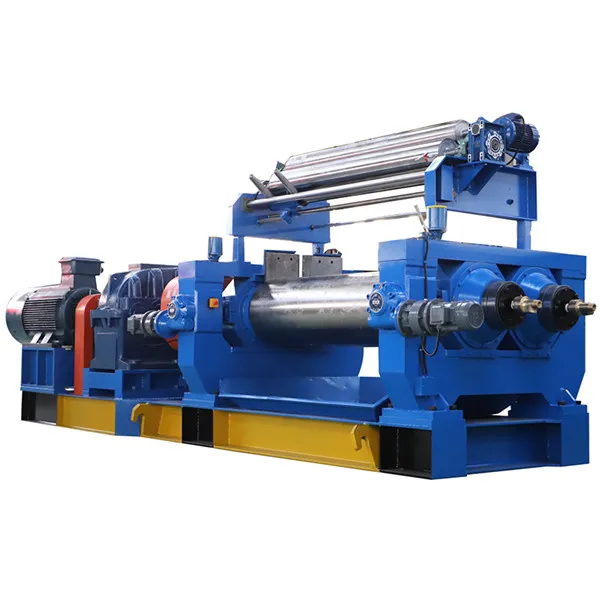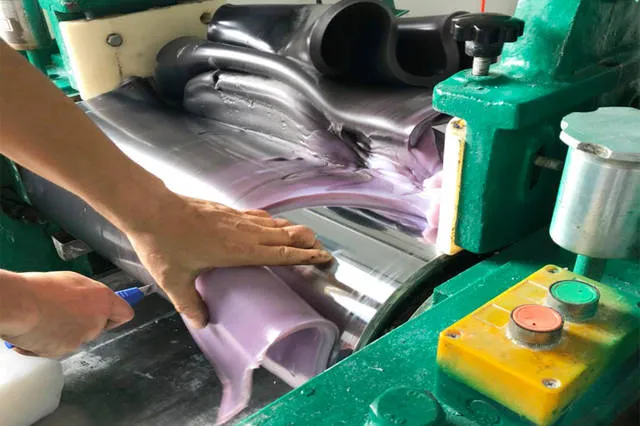Silicone rubber mixers are essential for producing high-quality silicone rubber goods. The efficient and effective mixing of silicone compounds is critical for ensuring the desired qualities and features of the finished product. This article discusses the importance of silicone rubber mixers, the various types available, key features to consider when selecting a mixer, best practices for operating and maintaining these machines, and solutions to common mixing issues. By understanding the complexity of silicone rubber mixing, firms may improve their processes and remain at the forefront of rubber production innovation.
Overview

Silicone rubber mixers are specialized devices used in the rubber industry to mix, blend, and process silicone rubber compounds. Mixing silicone rubber is similar to creating a smoothie; you want all elements to blend precisely for a faultless final product.
Importance of Silicone Rubber Mixers
Just like a good playlist sets the vibe for a party, proper mixing in silicone rubber production ensures a consistent and top-quality final product.
Silicone rubber mixers are crucial in the rubber manufacturing sector because they aid in the uniform dispersion of components, improving batch-to-batch uniformity and the physical qualities of the finished rubber goods. Here are a few essential details:
Enhancing the product quality
Using silicone rubber mixers is like having a master chef in your kitchen; it ensures a precisely blended batch every time, resulting in high-quality products.
Increasing the Efficiency and Cost Savings
These are the superhero sidekicks of the production process, making it faster and more cost-effective to produce high-quality silicone rubber products.
Types of Silicone Rubber Mixers
Batch Mixers
These are like the one-hit wonders of mixing—great for smaller batches and giving you control over each mix.
Continuous Mixers
Continuous mixers are the mixing world’s Energizer bunnies; they never stop working, making them suitable for larger-scale operations where uniformity is essential.
Laboratory Mixers
Laboratory mixers are used in research and development to test new formulations, optimize mixing parameters, and run small-scale production trials before full-scale manufacturing.
Some Key Features to Look for in a Silicone Rubber Mixer

Capacity and Mixing Volume: Just like picking the right size popcorn at the movies, choosing a silicone rubber mixer with a suitable capacity ensures you can handle the mixing needed.
Mixing Speed and Power: A silicone rubber mixer’s mixing speed and power are like the caffeine kick in your morning coffee – the faster and more powerful, the quicker you’ll get that perfectly mixed rubber.
Heating and Cooling Systems: Heating and cooling systems in silicone rubber mixers help control the temperature of the mix during processing, ensuring proper curing and vulcanization of the rubber compound.
Control Panel and Automation: Modern silicone rubber mixers include modern control panels and automation capabilities that allow operators to monitor and alter mixing parameters, increasing production efficiency and uniformity.
Mixing Chamber and Blades: The mixing chamber and blades are critical components of silicone rubber mixers. They facilitate thoroughly blending ingredients and ensure the uniform distribution of fillers and additives throughout the rubber compound.
Best Practices for Operating a Silicone Rubber Mixer
Proper Loading and Mixing Sequence When operating a silicone rubber mixer, think of it like making a fancy cake. You wouldn’t throw all the ingredients in at once, right? Follow the proper loading and mixing sequence to ensure a smooth and consistent blend. Just like how you carefully layer your cake mix, take the time to add your materials in the correct order for optimal results.
Optimizing mixing time and temperature when mixing silicone rubber is like finding the perfect balance of Netflix and chill – you don’t want to overdo it or be underwhelmed. Experiment with different mixing times and temperatures to discover the sweet spot for your specific blend. Like a well-baked cookie, the right combo will always give you a perfect, uniform mixture.
Maintenance Tips for Silicone Rubber Mixers
Silicone rubber mixers may not have feelings but perform better when correctly handled. Regular maintenance is critical to keeping these mixers running smoothly and producing high-quality products consistently.
Cleaning and Maintenance Schedule
Regular maintenance is vital to keeping your silicone rubber mixer in top-notch shape. Set a cleaning and maintenance schedule; think of it as giving your mixer a spa day. Wipe down components, check for wear and tear, and keep things squeaky clean to ensure your mixer stays happy and healthy.
Lubrication and Wear Prevention Techniques
Like a well-oiled machine running smoothly, lubrication is essential for keeping your silicone rubber mixer in top form. Choosing the right lubricants and taking preventive measures against wear and tear can go a long way toward maintaining your mixer’s performance.
Replacing Parts and Components
Like a trusty pair of sneakers, parts in your silicone rubber mixer will eventually wear out. Look for any signs of wear and tear, and don’t hesitate to replace parts when needed. Think of it as giving your mixer a little makeover – fresh parts mean a fresh start for your mixing adventures.
Common Issues and Troubleshooting for Silicone Rubber Mixers
Inconsistent Mixing Results
If your silicone rubber mixture behaves more like a grumpy teenager than a well-behaved blend, it may be time to troubleshoot. Check your mixing sequence, time, and temperature to see if any changes are necessary. Sometimes, a minor adjustment is all that is required to get your mix back on track.
The Noise or Vibrations During Operation
If your silicone rubber mixer starts sounding like a rock concert or vibrating like a rogue massage chair, it’s time to investigate. Check for loose components, worn-out parts, or improper assembly. Remember, a quiet and smooth-operating mixer is a happy mixer – nobody likes a noisy neighbor, even in the world of mixing.
In conclusion, silicone rubber mixers are indispensable tools for achieving consistent quality and efficiency in silicone rubber production. Manufacturers can optimize their processes and enhance their overall product outcomes by understanding the importance of proper mixing, selecting the correct type of mixer, and following best practices for operation and maintenance. With the insights and recommendations provided in this article, we aim to empower professionals in the silicone rubber industry to maximize the performance and longevity of their mixers, ultimately leading to superior-end products and customer satisfaction.
FAQs
1. What are the key factors when choosing a silicone rubber mixer?
2. How can I troubleshoot common issues, such as inconsistent mixing results with my silicone rubber mixer?
3. What maintenance practices are recommended to prolong the lifespan of a silicone rubber mixer?
4. Are there specific safety precautions to consider when operating a silicone rubber mixer?